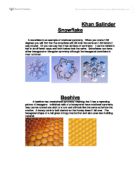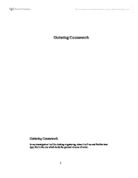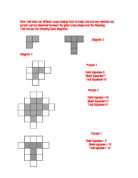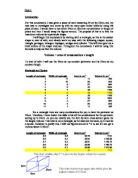Khan Salinder
Snowflake
. A snowflake is an example of rotational symmetry. When you rotate it 60 degrees you will find that the snowflake will still look the same as it did before it was rotated. Or you can say that it has six lines of symmetry. It can be folded in half in six different ways and both halves look the same. Snowflakes can have either hexagonal or triangular symmetry although the hexagonal snowflake is most common.
Beehive
A beehive has translational symmetry meaning that it has a repeating pattern of hexagons. Individual cells of a honeycomb have rotational symmetry they can be rotated one sixth of a turn and still look like the same as before the rotation. A honey comb is built slanted so that honey doesn’t fall over. The hexagonal shape of a cell gives strong construction and also uses less building material.

This is a preview of the whole essay
Teacher Reviews
Here's what a teacher thought of this essay
** This is a brief and very shallow investigation into different types of symmetry. It is framed using symmetry in nature as a context. The depth of the context needs to be developed more with statistical evidence to support the larger statements. There are specific improvements suggested throughout.








